
Pe-3bis

The Pe-3 was the fighter version of the Pe-2. At an early stage of the war the Soviets realized they lacked a long range fighter and felt it would be impossible to develop a new design during war time conditions. The Pe-2 however was considered a good candidate for modification to this role. In august of 1941 Petlyakov was ordered to develop a fighter variant of the Pe-2. The changes amounted to replacing the glazed nose with a solid one containing a 20mm ShVAK cannon, one 12.7mm UBK machine gun and one 7.62mm ShKAS machine gun. Two gun access hatches were added to the port side of the nose. The crew was reduced from three to two with both being housed in the front cockpit. The radio operators station was removed along with the ventral MB-2 gun position and its lower fuselage gondola. A 60 gallon fuel tank was put in this space. the bomb racks were removed from the bomb bay and a 66 gallon fuel tank mounted in there place. The dive brakes were removed as well as the waist windows. The Pe-3 had the same dimensions as the Pe-2. Some of the reported short comings from operational units were rectified in October of 1942. One of these complaints was lack of offensive and defensive fire power. A second 12.7mm UBK machine gun replaced the 7.62mm ShKAS weapon in the nose and a frontal armor plate was installed. The rear canopy glazing was eliminated and replaced by 12.7mm UBT machine gun on an FT mount.
The Pe-3bis was a further development that added slats on the wing leading edges to improve the take off and landing characteristics. This was the only use of slats on any of the Pe-2/3 variants. The two 12.7mm guns were removed from the nose and moved to the fuselage. Ammunition for these was loaded into the bomb bay. To make room for this the fuselage fuel tank was reduced from 66 gallons to 26 gallons and an asbestos filled partition separated the tank from the guns. It was also equipped with the VUB-1 rear canopy turret with a 12.7mm UBT machine gun. This was prior to introduction of this turret on the Pe-2. 207 Pe-3's were built prior to switching production to the Pe-3bis. 134 of the Pe-3bis built before production ended in March of 1943.
The Kit
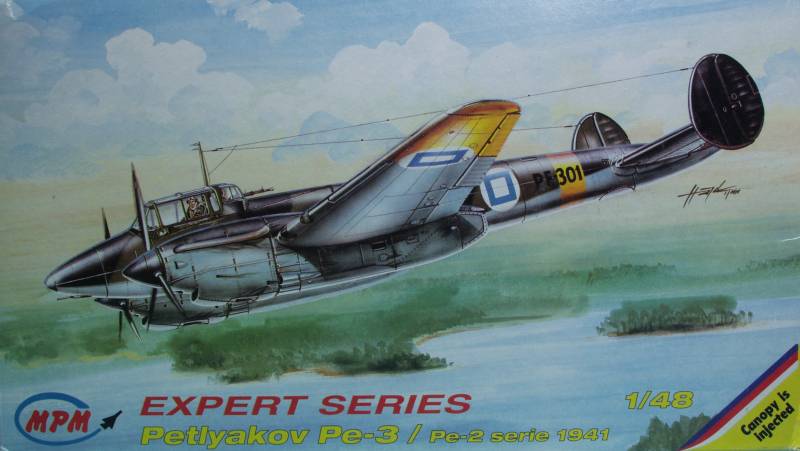
The MPM kit comes in one of those unhandy end flap boxes with reasonably attractive artwork on the front. Inside the box is one large bag containing all the parts with two small bags containing resin parts and the decals which were also bagged. The clear parts, both injection and vacuformed were not separately wrapped. Three of the sprues were molded in a gray colored plastic while a forth was molded in an off white color. The parts feature recessed panel lines, some of which are so fine that they may disappear under a coat of paint. There are some fastener and louver details that are recessed as well. All of the parts exhibit a moderate amount of flash, in a few cases it is a bit heavy and some of the sprue attachment points are heavy and will require care when removing them. The control surfaces are all fixed in the neutral position and the lines delineating them are only slightly larger that the panel lines and could stand to be made deeper with a bit of scribing. The surface is generally smooth but have rough areas in places either from the mold parting compound of the molds were just dirty. I did not find any sink marks on the exterior surfaces but there was one wavy spot on one wing and some sort of a slight scratch on the other. There are one or two ejector pin marks that may show in the cockpit area. Fortunately the insides of the gear doors and landing gear struts were spared any marks. The areas of the interior that will show through the glazings has ribs and a couple junction boxes molded into the fuselage. The cockpit area has a fairly high level of detail using both resin and injected parts and should look quite nice painted up. The kit can be built to represent either a late series Pe-2 or Pe-3. this accounts for the one off white sprue which as parts needed for the various version that were not part of the original kit which modeled an early version Pe-2. On at least two of the versions the original kit engines will need to be cut off and replaced with the newer parts. Interestingly enough the new sprue has a smoother surface finish and nicer panel lines. The propellers are the multi part variety. The tires are not weighted. Altogether by my count there are 90 parts in gray and off white. See below.
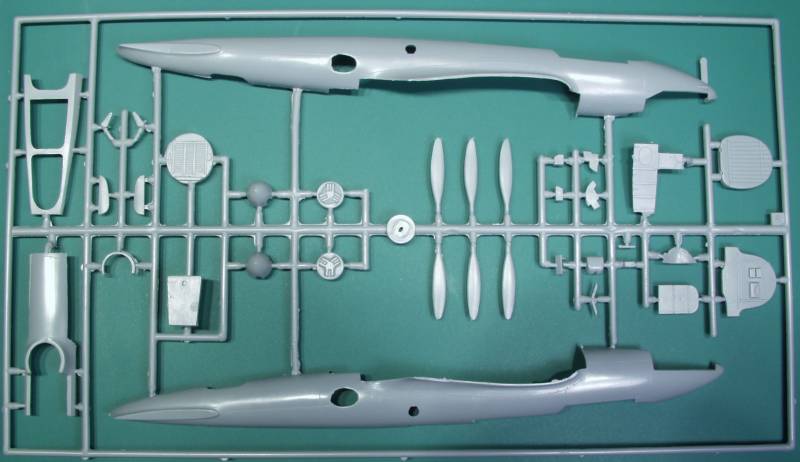
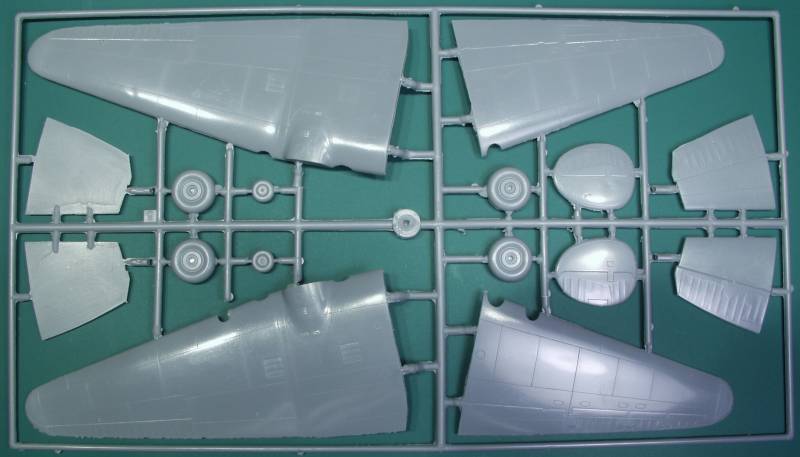
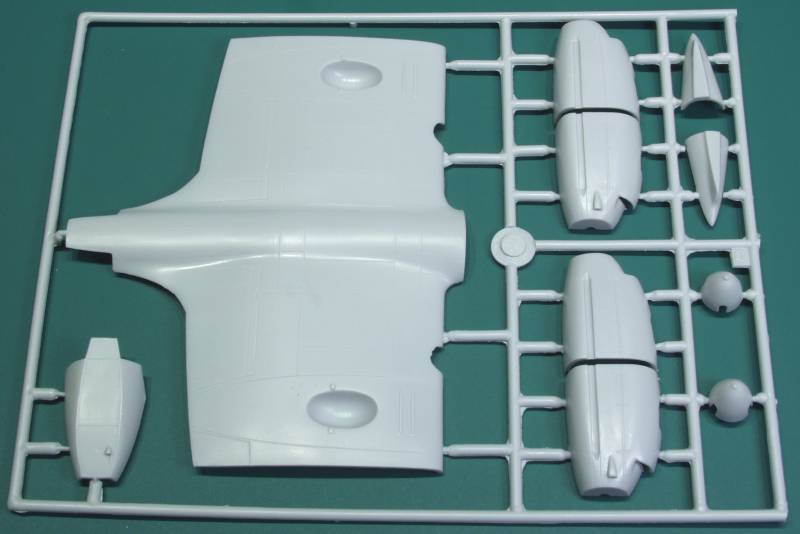
The resin parts consist of both interior parts such as side walls, seats, guns and gun mounts and radios and external parts such as fuselage gun pack, dive brakes and exhaust pipes. The parts are crisply molded and I found no short shots or air bubbles but flash on some of the parts will make clean up problematic, the dive brakes are the worst offenders. See below.
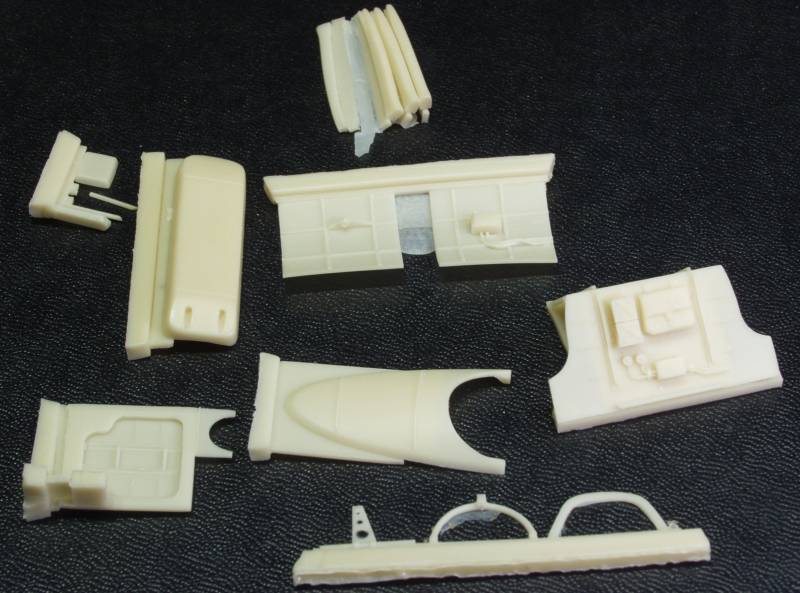
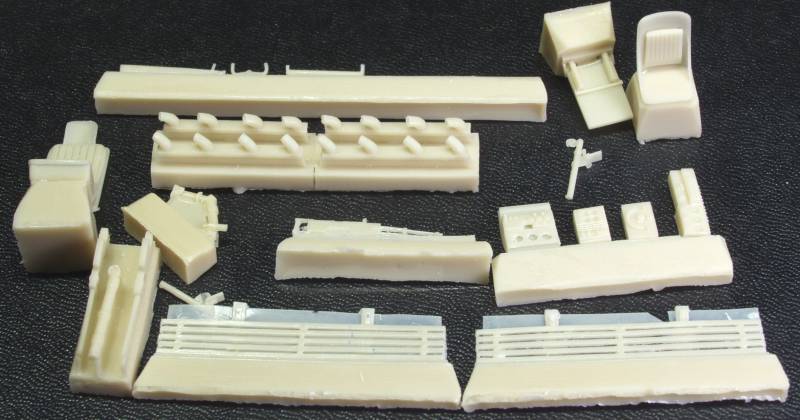
The clear parts are supplied as injected for the versions with turrets and vacuformed for the Pe-3 versions. The injected parts are moderately thin and reasonably clear with well defined frame lines. The vacuformed parts are not as clear as I would like but the frames lines are well defined and they should look OK with a coat of future. There are 10 injected parts and 4 (two of each part) vacuform parts. See below.
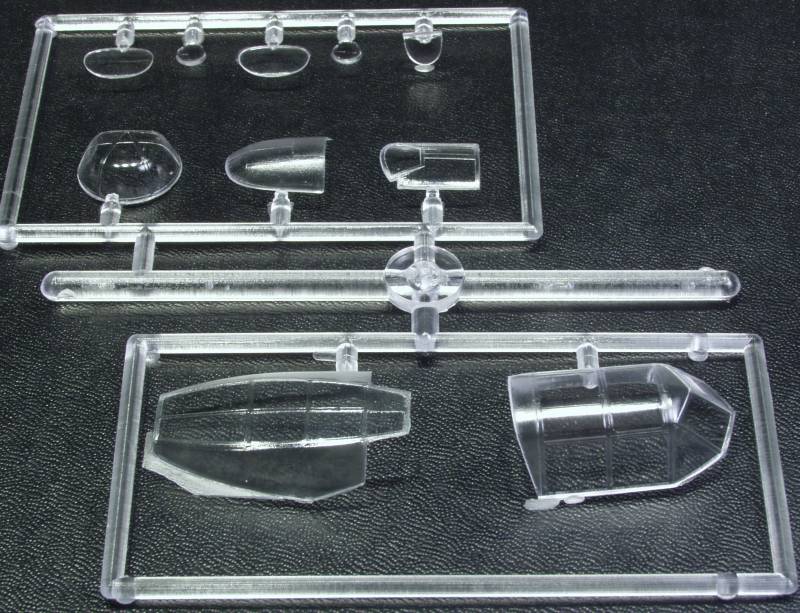
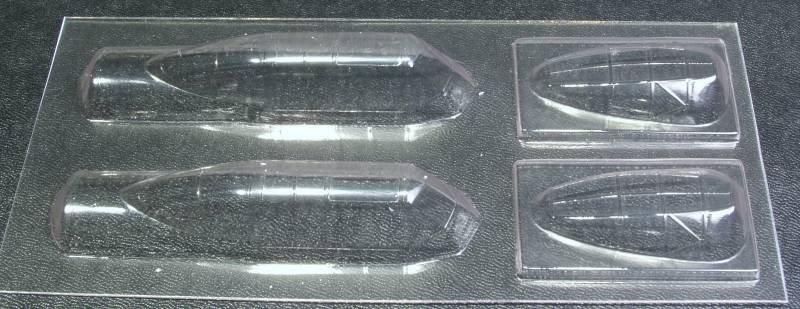
The decals are thin and glossy and are in register but I have some doubts as to the opacity of the red in the stars. Marking are supplied for four aircraft, one each Pe-2 and Pe-3 in Soviet and Finnish markings. See below.
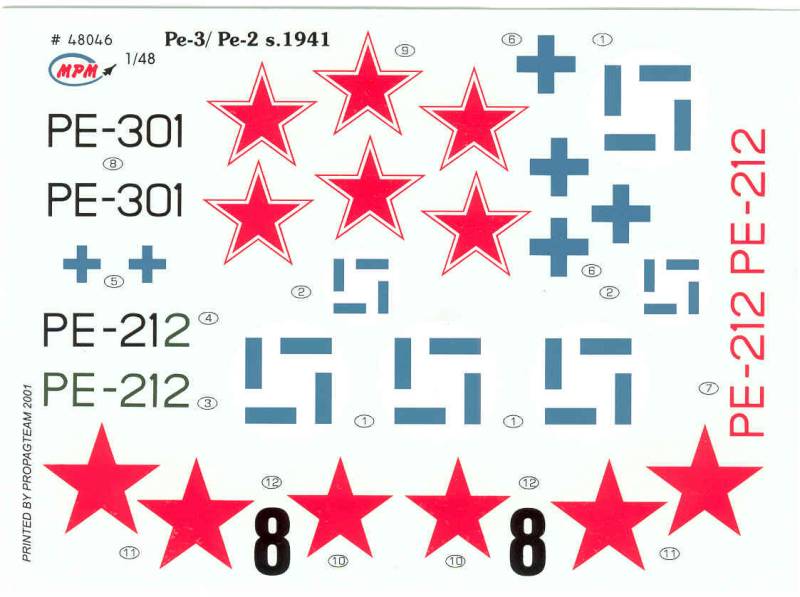
The instructions are printed on four A4 sheets folded in half to make a 16 page booklet. The first page includes a brief history and specifications in four languages, the second and third are parts maps, four through twelve are assembly steps and thirteen through sixteen are painting and marking instructions. One will need to be very careful during assembly to choose the correct parts for the desired version. This information is crammed in amongst the rest of the assembly drawings and can be easily over looked or confused if you are not careful.
After Market Goodies
I am not currently aware of any that are available.
Conclusions
This kit is a good example of a short run kit with all the usual issues and will no doubt require a lot of work to finish but the parts have been suppled to create a well detailed model for those wishing to invest the time and effort. Recommended for experienced modelers only.
Links to kit build or reviews
None that I have found to date.
References
Petlyakov Pe-2 in Action by Hans-Heiri Stapher
Back to the Russians are Coming